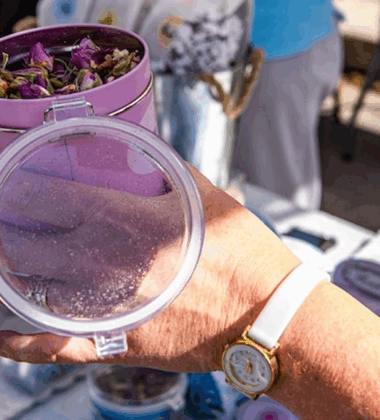Whether it’s a five-star tasting menu or a food truck pop-up, the perfect menu doesn’t just satisfy hunger—it rewires memory, sparks emotion, and drives return visits. But what separates an ordinary list of dishes from a sensory-driven, crave-inducing experience?
The answer lies not just in taste, but in the science of perception and design.
In preparation for the Global Products Expo USA, June 26–28, 2025, where culinary innovation takes center stage, this post explores how brands, chefs, and food experience designers can use neuroscience-backed strategies to craft menus that don’t just work—but win.
Why the Perfect Menu Is More Than a Dish List
A perfect menu isn’t about offering “something for everyone.” It’s about curating an experience that leads the guest from curiosity to satisfaction to desire.
In behavioral terms, menus function as decision architectures. They guide not just what people eat—but how they feel about what they eat. That means the design of a menu, the flavor balance, the storytelling, and even the emotional triggers are all as critical as the food itself.
As leading food neuroscientist Dr. Rachel Herz puts it: “Flavor is never just taste—it’s memory, context, expectation, and identity.”
At food expos and culinary showcases, understanding this multidimensional reality can elevate a brand’s presentation from informational to unforgettable.
The Neuroscience Behind Craving
To design the perfect menu, we first need to understand what makes people crave certain foods.
Cravings are not about nutrients—they’re about reward. When we experience pleasurable food, the brain releases dopamine—not because of the food’s content, but because of the anticipation and satisfaction of the reward.
Sensory Factors That Trigger Cravings:
- Contrast: Crunchy + creamy
- Temperature: Hot paired with cool
- Color & Plating: Visual harmony triggers appetite
- Aroma: 80% of flavor perception is smell
- Memory: Comfort foods evoke childhood, tradition, or indulgence
Menus that activate multiple senses and connect to personal emotion create a “crave loop”—a powerful cycle that makes guests want to return or share the experience.
Emotional Branding Through Food
Each dish on a menu is a brand asset—a micro-story that can either strengthen or dilute your food identity. That’s why the perfect menu isn’t just about great food—it’s about emotional consistency.
Food designers and marketers often borrow from behavioral economics and consumer psychology to increase emotional engagement:
- Anchoring Bias: Featuring a high-priced item first makes everything else seem more affordable.
- Descriptive Labeling: “Flame-grilled, locally sourced, house-fermented” builds story and value.
- Sensory Language: “Melt-in-your-mouth,” “silky,” “zingy” adds expectation.
At expos, even the most technical food demos benefit from emotionally resonant menu cards or guided tastings that frame the experience as meaningful, not just functional.
The Anatomy of the Perfect Menu
Here’s a practical framework food brands and sensory teams use to craft high-converting, emotionally resonant menus:
1. Balance of Familiarity and Novelty
- Too much novelty overwhelms; too much familiarity bores.
- Strategy: Use a 70/30 ratio—anchor the menu in comfort but introduce a twist.
2. Flavor Progression
- Menus should guide the palate from light to rich, simple to complex.
- Sequence matters: avoid palate fatigue by spacing bold dishes.
3. Emotional Touchpoints
- Ask: What should the guest feel after this dish? Comfort? Surprise? Nostalgia?
- Use dish names and presentations that echo the intended emotion.
4. Multisensory Design
- Use plating, texture, temperature, and aroma to maximize contrast and immersion.
- In booth design or product tastings, match music, lighting, and scent with dish theme.
5. Crave Repeatability
- Highlight dishes with high “replay value”—things people will want again and again.
- Use social proof (“our most-loved item”) to reinforce desire loops.
Examples in Action: Menu Strategies from Top Brands
Here’s how major food players are using neuroscience and emotional design to create perfect menus:
1. Sweetgreen: The Modular Crave Loop
- Customizable bowls tap into control psychology.
- Ingredient names carry emotional value: “spicy broccoli,” “blackened chicken,” “warm quinoa.”
2. Shake Shack: Nostalgia Meets Novelty
- Menu is rooted in Americana (burgers, crinkle fries) with limited-time flavors (truffle burger, hot honey).
- Emotional storytelling drives engagement both online and at POS.
3. Blue Apron: Preloaded Anticipation
- The menu is emailed before delivery—building dopamine in anticipation.
- High-descriptor language (“sweet Thai chili glaze,” “buttery pan sauce”) primes taste buds.
Building Menus That Sell at the Expo
For food exhibitors at the Global Products Expo, a well-structured menu is your #1 marketing tool. But it has to do more than just list flavors—it needs to sell your story, emotionally engage tasters, and make your brand stick.
Here’s how to optimize your booth menu for craveable impact:
Pre-Event:
- Use your menu in outreach: tease signature dishes or prototype samples in emails and social posts.
- Make the menu visually engaging with taste cues, not just technical names.
At the Booth:
- Offer “guided tasting menus” (mini flights) with curated narratives.
- Introduce “crave anchors”—dishes designed to be irresistible and recallable.
- Use emotion-centric descriptors. Instead of “spicy tofu skewers,” say “crispy tofu kissed with chili-lime caramel.”
Post-Event:
- Include menu highlights in your recap newsletter: “Did you try our most snapped dish?”
- Build anticipation for future shows: “Our summer menu is in the works—bolder and brighter.”
The Role of Personalization in Menu Design
Today’s food-savvy audiences want menus that feel tailored to them.
Some trends reshaping the idea of the perfect menu include:
- AI-based taste profiling: Creating menus based on guest mood, weather, or health goals.
- Dynamic QR menus at expos that change based on inventory or live feedback.
- Emotion-tracking trials: Measuring facial micro-expressions during tastings to refine dish appeal.
By combining tech with sensory design, brands can move beyond generic offerings and into bespoke flavor journeys—a surefire way to boost memorability and loyalty.
Testing & Validating the Menu
The final step in perfect menu design is measuring its impact—not just in sales, but in emotion.
Key Indicators of Menu Success:
- Dwell time: How long do guests engage with the menu?
- Conversion rate: What percentage of tasters opt in for the full experience?
- Emotional feedback: Are descriptors triggering the intended reactions? Use post-taste surveys or quick emoji polls.
- Return behavior: Did your menu generate repeat visits during the event?
Menu testing should be iterative. Capture real-time feedback and make micro-adjustments across day one to day three of the expo.
Final Thoughts: Designing Crave Through Menu Craft
In the battle for attention, flavor alone is no longer enough. Today’s food brands must master the art and science of menu-driven emotion.
The perfect menu doesn’t just feed people. It:
- Triggers anticipation
- Delivers multisensory joy
- Leaves a lasting emotional imprint
At the Global Products Expo, where hundreds of competing booths vie for attention, it’s not the loudest product that wins—it’s the most emotionally tuned experience.
So whether you’re a culinary brand launching a new product, or a food marketer refining your expo strategy, ask yourself:
- Is my menu built for memory?
- Does it tell a story?
- Does it leave people craving more?
If the answer is yes—you’re not just serving food. You’re building the future of edible identity.





